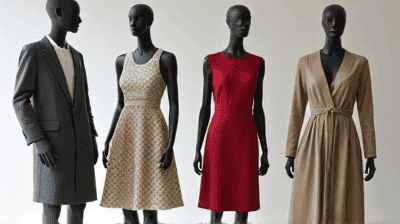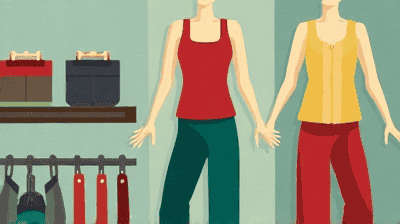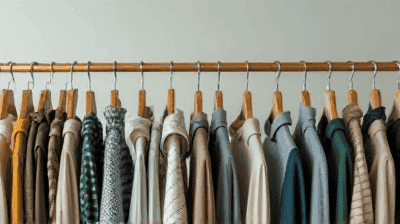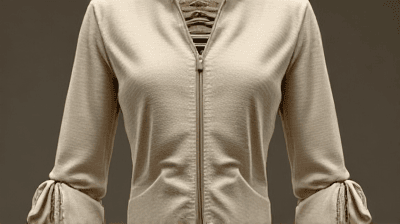
The fashion industry is one of the most dynamic and influential sectors in the global economy, profoundly affecting culture, identity, and the environment. However, it is also one of the most resource-intensive industries, contributing to significant environmental issues such as pollution, waste, and carbon emissions. As climate change and ecological degradation become increasingly pressing threats, the concept of the circular economy is emerging as a potential pathway to transforming fashion into a more sustainable practice.
The circular economy is an alternative economic model to the traditional linear approach of "take, make, dispose." In a linear economy, resources are extracted, products are made, used, and eventually discarded as waste. This model leads to overconsumption of resources, environmental degradation, and significant waste generation.
In contrast, a circular economy emphasizes:
Resource Efficiency: Utilizing resources more sustainably by reducing waste at all stages of production and consumption.
Recycling and Upcycling: Encouraging the recycling of materials and repurposing of products to extend their life cycle and minimize waste.
Regenerative Processes: Focusing on processes that regenerate and restore natural systems, contributing positively to the environment.
Sustainable Design: Designing products with the end of their life cycle in mind, considering recyclability, biodegradability, and the use of renewable materials.
The circular economy model has become increasingly relevant in the fashion industry, where the fast fashion trend has resulted in significant environmental impacts. The global fashion industry is responsible for an estimated 10% of annual carbon emissions, more than international flights and maritime shipping combined. In addition, textile production consumes a vast amount of water and contributes to water pollution due to the use of toxic dyes and chemicals.
To counter these challenges, the circular economy offers an opportunity for the fashion industry to innovate, reduce its ecological footprint, and create lasting change.

Fast fashion refers to the rapid production of inexpensive clothing to meet the latest trends, leading to high levels of consumption and waste. Brands like Zara, H&M, and Forever 21 exemplify this model, creating an environment where consumers are encouraged to purchase frequently and discard items quickly.
Resource Depletion: The fast fashion industry exploits natural resources at an unsustainable rate, leading to deforestation, water scarcity, and loss of biodiversity.
Waste Generation: With millions of tons of textiles ending up in landfills each year, fast fashion contributes significantly to waste creation. According to the World Bank, over 90 million tons of textiles are discarded annually, with only a small percentage being recycled.
Labor Exploitation: The fast fashion industry often relies on cheap labor in developing countries, where workers are paid low wages and work in poor conditions. This raises ethical concerns regarding labor rights and social sustainability.
In response to the environmental and social consequences of fast fashion, the sustainable fashion movement has gained momentum in recent years. This movement advocates for more responsible practices, including ethical production methods, sustainable materials, and fair labor practices.
Slow Fashion: This approach encourages consumers to buy fewer, high-quality garments that are timeless and durable, reducing overall consumption and waste.
Eco-Friendly Materials: Sustainable fashion prioritizes the use of organic, recycled, or biodegradable materials that have a lower environmental impact compared to conventional fabrics.
Transparency and Ethical Practices: Sustainable brands prioritize transparency in their supply chains, ensuring that workers are treated fairly and paid living wages.
Transitioning the fashion industry to a circular economy involves several key components. Each aspect contributes to creating a system that prioritizes sustainability, minimizes waste, and maximizes resource efficiency.
Sustainable fashion begins with design. By creating durable and timeless pieces, brands can encourage consumers to invest in clothing that lasts longer, reducing the frequency of replacements.
Recycling and upcycling transform waste into valuable resources, helping to close the loop in the fashion industry.
A circular fashion economy relies on creating supply chains that prioritize sustainability at every stage—from sourcing raw materials to production, distribution, and waste management.
Educating consumers about the impact of their clothing choices is essential for promoting a circular economy in fashion. By fostering awareness and encouraging responsible purchasing habits, brands can influence consumer behavior.
The development of sustainable materials is crucial for a circular fashion economy. Innovations in textile technology can reduce dependency on natural resources and promote recycling.

While the concept of a circular economy in fashion holds promise, several challenges must be addressed to achieve true sustainability.
The global fashion industry operates through intricate supply chains that often involve multiple stakeholders across various countries. This complexity makes it difficult to ensure every aspect is sustainable and ethical.
Changing consumer habits is a significant challenge. The culture of fast fashion and the continuous demand for new styles can hinder the transition to a sustainable fashion model.
For brands, transitioning to a circular economy can involve significant upfront investment. Sustainable materials and ethical production methods may increase costs, and companies must find ways to balance profitability with sustainability.
The infrastructure for recycling and upcycling is still underdeveloped in many regions. Without proper systems in place, it becomes challenging to recover materials and create circular systems.
Measuring the true environmental impact of clothing production, including carbon footprint, water usage, and waste generation, is complex. Brands need to establish transparent metrics to assess and communicate their sustainability efforts effectively.
A number of fashion brands and designers are leading the charge in adopting circular economy principles, demonstrating the potential for sustainable clothing.
Patagonia is known for its commitment to environmental sustainability and ethical production. The company encourages customers to repair their clothing through its Worn Wear program, which promotes the idea of reusing and repairing instead of discarding.
Eileen Fisher works to create a closed-loop system by implementing a take-back scheme that allows customers to return their used items for resale, recycling, or upcycling. The brand emphasizes transparency, detailing the sourcing of materials and the impact on the environment.
A pioneer in sustainable fashion, Stella McCartney incorporates sustainable practices into her brand's DNA. McCartney avoids using leather or fur and focuses on innovative materials, including recycled polyester and organic cotton.
Allbirds is known for its commitment to sustainability in footwear and apparel. The brand uses natural, renewable materials, prioritizes carbon neutrality, and emphasizes transparency with consumers regarding sustainability metrics.
Reformation aims to make fashion sustainable by providing detailed information on the environmental impact of each garment. The brand uses eco-friendly materials and participates in recycling programs to reduce waste.
Rent the Runway promotes clothing rental as a way to extend the life cycle of garments. By enabling customers to rent high-quality clothing for specific occasions, the brand reduces the demand for fast fashion.

As the fashion industry navigates the transition to a circular economy, several pathways can help foster a sustainable future:
Collaboration between brands, suppliers, and consumers is essential for creating industry-wide standards for sustainability. Developing guidelines and certifications will promote accountability and transparency, making it easier for consumers to identify sustainable options.
Governments can play a crucial role in promoting the circular economy in fashion through policies that encourage sustainable practices, provide financial incentives for eco-friendly initiatives, and promote responsible consumption.
Consumer advocacy and activism can drive change within the fashion industry. By demanding transparency, holding brands accountable, and supporting sustainable options, consumers can influence industry practices and promote a circular economy.
Promoting education and awareness around sustainable fashion can equip consumers with the knowledge needed to make informed choices. Campaigns that highlight the impact of clothing waste and the benefits of circular practices can drive greater consumer engagement and participation.
Continuous investment in research and innovation is key to developing new materials, recycling technologies, and sustainable production methods. Partnerships with research institutions can accelerate advances in sustainable fashion practices.
The transition to a circular economy in fashion represents a vital opportunity to address the industry's significant environmental impacts while promoting responsible consumption practices. While challenges exist, the growing awareness of sustainability issues and the efforts of brands, consumers, and organizations indicate a shift toward more sustainable clothing practices.
Creating truly sustainable clothing is a complex endeavor that requires collective action from all stakeholders within the fashion ecosystem. By embracing circular economies, the industry can work toward reducing waste, maximizing resource efficiency, and restoring harmony with the environment. Ultimately, the question of whether clothing can be truly sustainable hinges on our collective commitment to reimagining the fashion landscape and pursuing practices that prioritize people and the planet.
As we continue to explore innovative solutions and establish more sustainable systems, the vision of a circular fashion economy—where clothing is designed, produced, used, and disposed of sustainably—may one day become a reality.